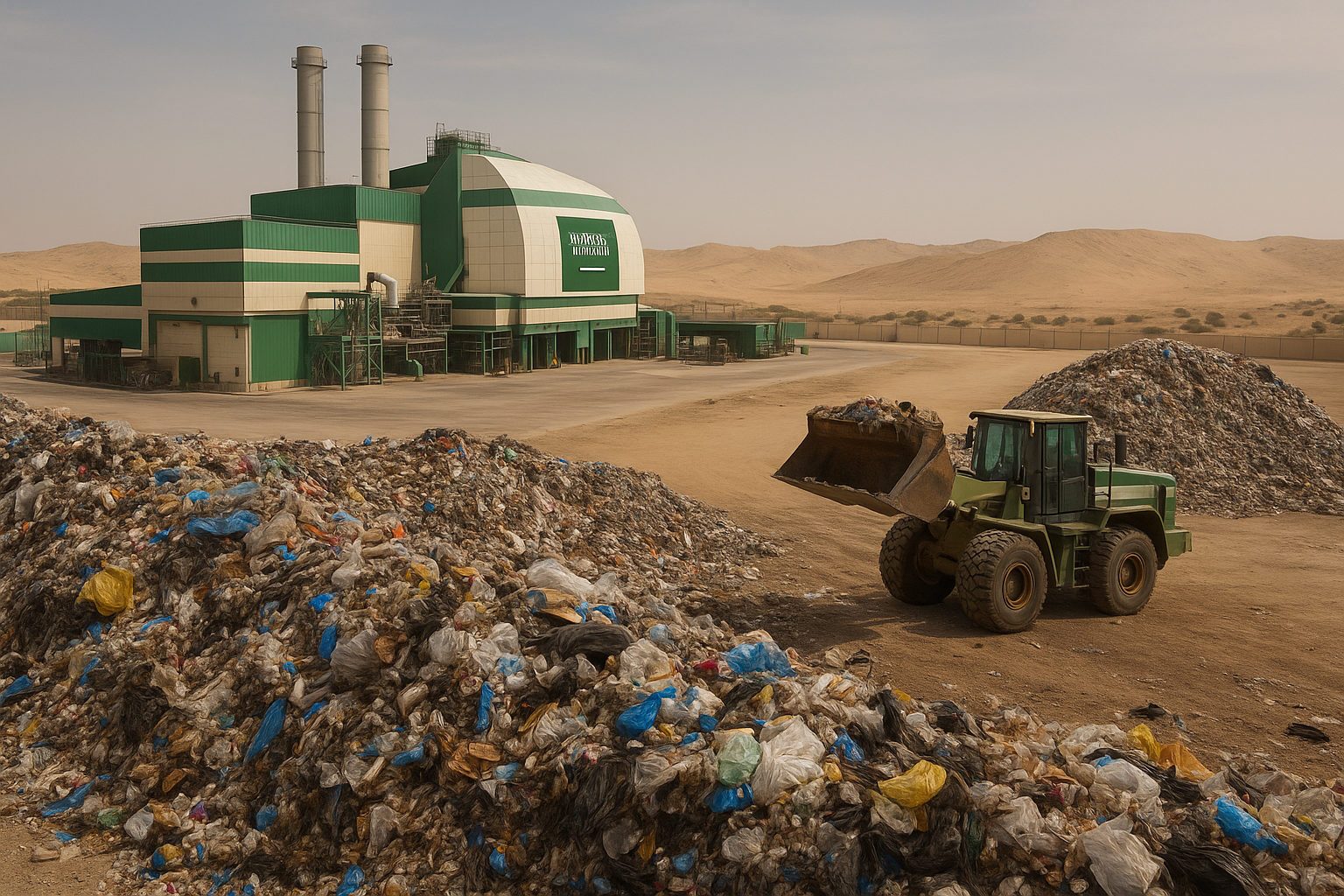Gulf region’s waste-to-energy transition could cut methane emissions by 90%
The Gulf Cooperation Council (GCC) generates some of the world’s highest per capita waste volumes, with most of it still ending up in landfills. The study reports that Saudi Arabia produces around 15 million tons of municipal solid waste annually, mainly from cities such as Riyadh, Jeddah, and Dammam. For decades, the region’s waste strategy relied on disposal rather than recovery, creating growing environmental and public health challenges.

A new study highlights how renewable waste management could transform Saudi Arabia and its Gulf neighbors into leaders of sustainable energy.
The paper, titled “Harnessing Renewable Waste as a Pathway and Opportunities Toward Sustainability in Saudi Arabia and the Gulf Region”, published in Sustainability, provides one of the most detailed assessments yet of how waste-to-energy (WtE) systems can drive environmental, economic, and social sustainability in the region.
A region at a turning point in waste and energy policy
The Gulf Cooperation Council (GCC) generates some of the world’s highest per capita waste volumes, with most of it still ending up in landfills. The study reports that Saudi Arabia produces around 15 million tons of municipal solid waste annually, mainly from cities such as Riyadh, Jeddah, and Dammam. For decades, the region’s waste strategy relied on disposal rather than recovery, creating growing environmental and public health challenges.
Saudi Arabia’s Vision 2030 agenda marks a decisive shift. The government has set a national target of producing 3 gigawatts of electricity from waste-to-energy technologies by 2030, part of its broader move toward a circular economy and diversification away from oil dependence. According to the authors, this vision reflects a fundamental policy transformation, one that treats waste as an economic resource rather than an environmental burden.
The paper highlights the establishment of the National Center for Waste Management (MWAN) and the National Center for Environmental Compliance (NCEC) as institutional milestones that are steering this transition. These agencies are developing regulatory frameworks to standardize recycling, incentivize WtE investment, and improve data collection on waste generation and treatment.
Technology, innovation, and the promise of waste-to-energy
The research outlines a range of technological pathways being explored in the Gulf, from incineration and anaerobic digestion to gasification, pyrolysis, and hydrothermal liquefaction. Each process offers different advantages depending on the composition of waste streams, local infrastructure, and energy needs.
The study cites regional success stories that demonstrate the growing viability of large-scale WtE projects:
- Sharjah, UAE: A facility processing 300,000 tons of waste annually and generating about 30 megawatts of power.
- Dubai: A $1.1 billion plant designed to convert 1.9 million tons of waste into 200 megawatts annually.
- Qatar: The Mesaieed center produces about 50 megawatts from municipal waste.
- Saudi Arabia: Multiple pilot projects are underway, with full-scale implementation expected to contribute significantly toward the national 3-GW goal by 2030.
According to the findings, shifting from landfill disposal to WtE could reduce methane emissions by up to 90 percent while simultaneously generating renewable energy and creating new jobs. Recycling metals such as aluminum could save up to 95 percent of the energy used in primary production, further reducing carbon footprints.
The authors emphasize that integrating recycling, composting, and WtE within a single waste management framework could dramatically boost the region’s sustainability index. This integrated approach supports circular economy principles, closing material loops, minimizing waste, and recovering value at every stage of production and consumption.
Barriers, opportunities, and the path forward
Despite these advances, the study identifies several challenges that must be addressed before the region can achieve large-scale sustainability through renewable waste management.
-
Economic and structural barriers include high capital costs, dependence on imported technologies, and limited private sector participation. The researchers recommend expanding public-private partnerships to share financial and technical risks.
-
Regulatory fragmentation is another hurdle. Waste management responsibilities are often divided across agencies, leading to inconsistent implementation and enforcement. A unified national framework could streamline coordination among stakeholders.
-
Cultural and behavioral challenges persist. The authors note that limited public awareness and weak recycling habits undermine the effectiveness of waste segregation at the source. Educating households, businesses, and local authorities about waste sorting is vital to building a sustainable system.
-
Energy market distortions, such as fossil fuel subsidies, reduce incentives to invest in renewable alternatives. Policy reform is needed to make WtE financially competitive while maintaining affordability for consumers.
Social inclusion and job creation emerge as major co-benefits of this transition. The study estimates that a mature renewable waste sector could generate thousands of direct and indirect jobs, from facility construction to recycling operations and logistics. Furthermore, improved waste infrastructure could enhance public health and reduce land degradation across rapidly urbanizing Gulf cities.
To overcome systemic barriers, the authors propose a multi-layered strategy:
- Regulatory reforms to clarify investment rules and streamline project approvals.
- Financial incentives such as tax breaks, green bonds, and subsidies for renewable waste infrastructure.
- Public awareness campaigns to change consumption and disposal patterns.
- Regional cooperation among GCC states to share best practices, harmonize standards, and strengthen research networks.
The paper also highlights the need for R&D investment in advanced conversion technologies such as pyrolysis and gasification, which can extract greater energy efficiency and lower emissions compared with conventional incineration.
- FIRST PUBLISHED IN:
- Devdiscourse










